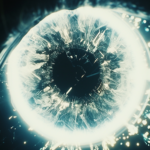BioID has announced an update to its Deepfake Detection technology, aiming to counter the rising threat of cybercrimes facilitated by deepfake technology. This innovative solution is integrated into BioID’s Liveness Detection API and enhances the company’s ability to discern between genuine and AI-manipulated images or videos, crucial for secure digital identity verification.

The advent of deepfake technology poses significant challenges to the authenticity of digital content, making it increasingly difficult to trust images and videos online. BioID’s response to this threat involves the use of sophisticated artificial intelligence algorithms designed to detect manipulations, thereby protecting individuals and organizations from the potential harms of identity fraud.
Concern about the threat of deepfakes is not based on mere speculation; the technology is already making a real-world impact. Earlier this year, for example, news emerged from Hong Kong of an employee at a multinational company who transferred millions of dollars to a fraudster after being instructed to do so by a synthetic copy of the firm’s Chief Financial Officer. These are the kinds of threats that have prompted institutions like the Federal Trade Commission in the US to pursue new rules in an effort to pursue such fraudsters and malefactors.
BioID’s aim, meanwhile, is to address the problem head-on, by spotting deepfake attacks as they happen.
“Our mission at BioID is to provide solutions that enhance security and
trust in digital environments,” said BioID CEO Ho Chang. “With our Deepfake Detection, we are empowering individuals and organizations to protect themselves against the harmful effects of deepfake technology.”
In addition to its commercial applications, BioID is actively engaged in research to further refine deepfake detection methods. The company’s participation in a German research consortium, funded by the German Federal Ministry of Education and Research, underscores its commitment to advancing the field of biometric security.
–
March 6, 2024 – by the FindBiometrics Editorial Team








Follow Us